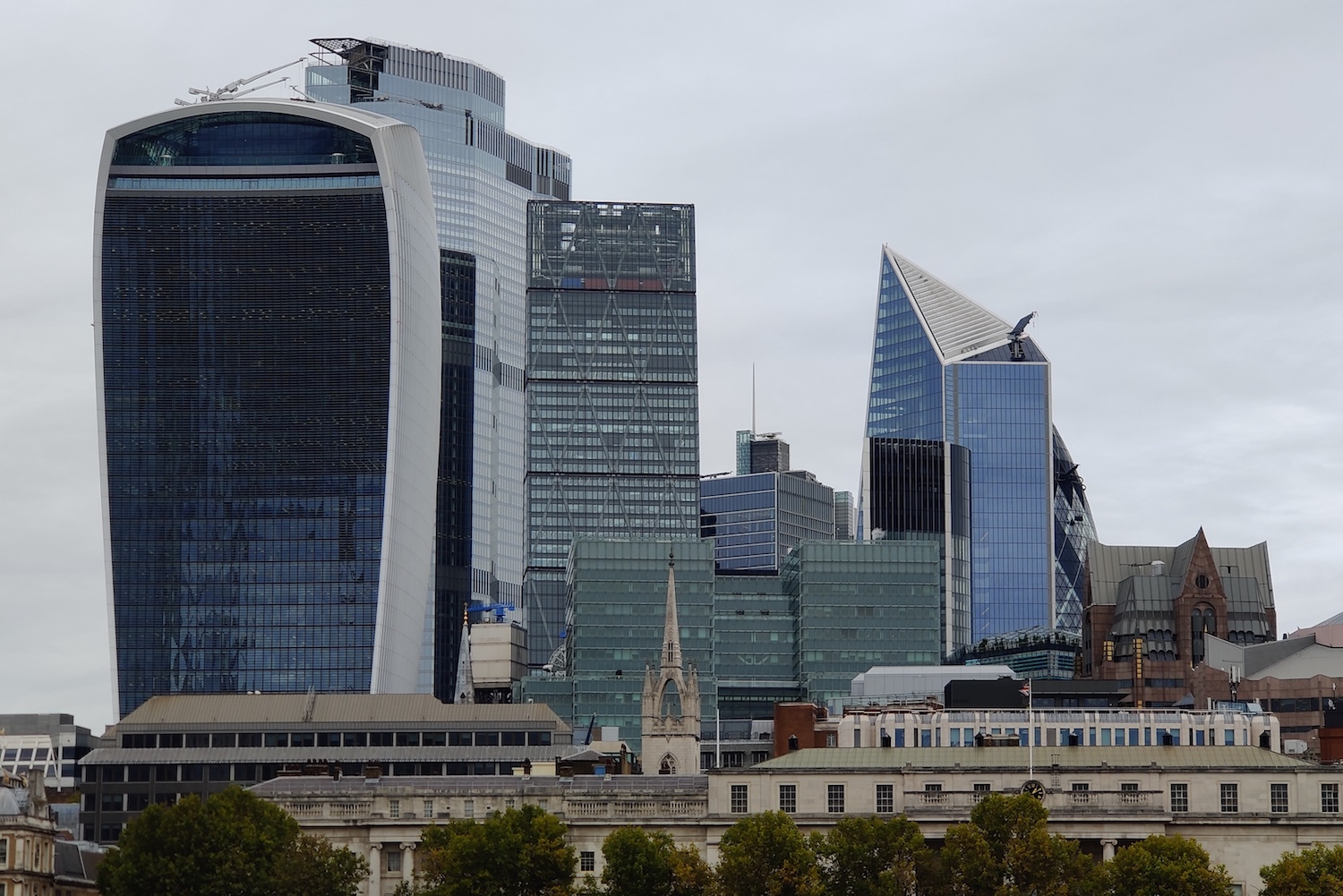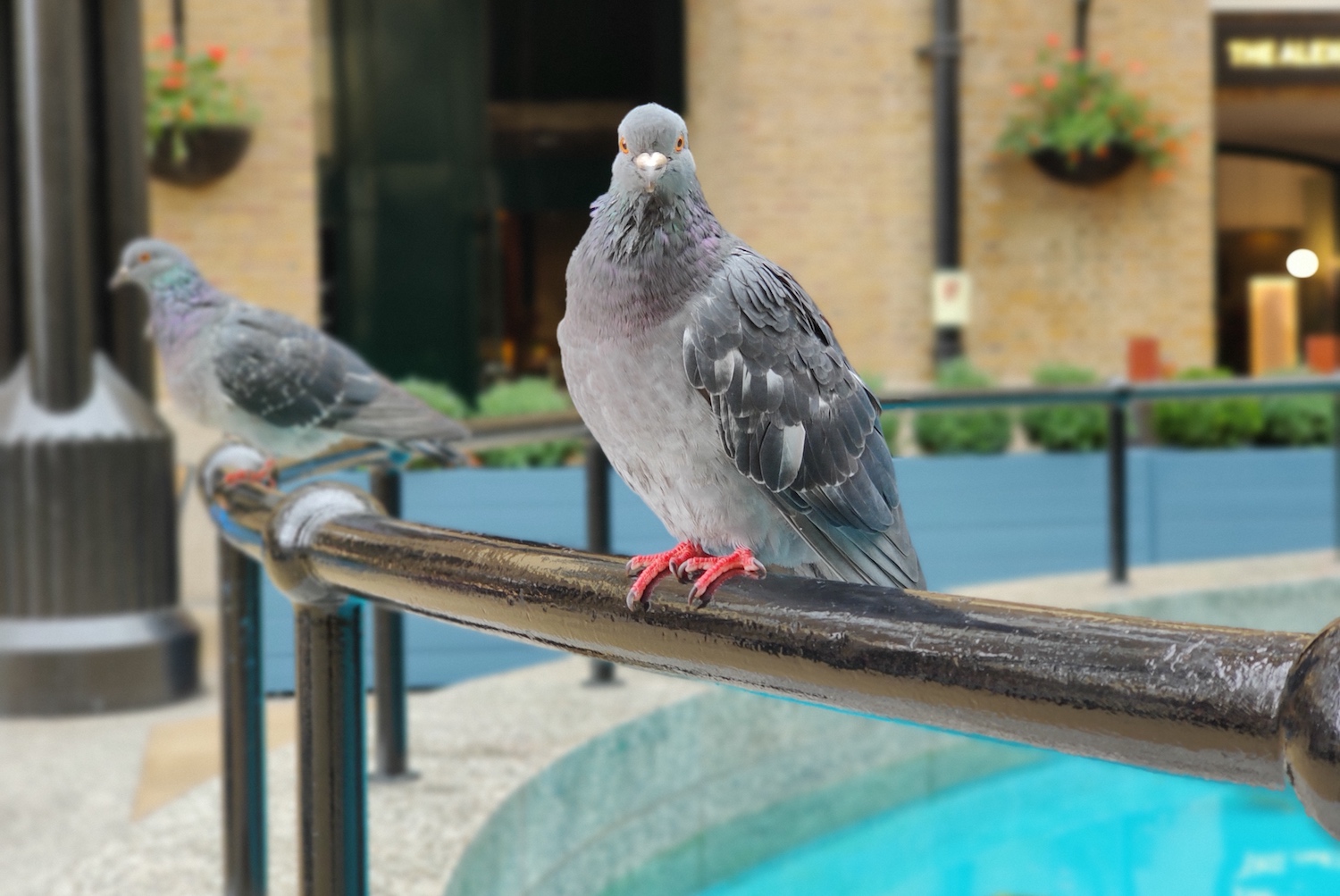- Large, stunning 90Hz touchscreen
- Capable triple-lens camera
- Fast charging
- Stylish design and eye-catching new color
- Powerful performance
- Not available in the U.S.
- Some software problems
- No water resistance, no wireless charging
OnePlus has a problem on its hands — the OnePlus 7T is excellent. Announced at the end of September, I liked using the camera, the battery lasts for ages, it’s eye-wobblingly fast, the screen has the all-important 90Hz refresh rate, and you get all of that for $600. It’s the essence of OnePlus’ quest to deliver smartphones that offer the features we want at a price we can afford.
So how can OnePlus convince us to splash out more for the new OnePlus 7T Pro, when the differences are few and far between? The solution is to send the 7T Pro to the beauty salon, as the 7T missed its appointment and therefore has to hope its au naturel looks don’t stop you noticing its talent.
Most people should buy the OnePlus 7T and save some dough, but if you’re harping on its aesthetics, consider the OnePlus 7T Pro, as it’s more of a head-turner with all of the same great features.
Superior design
There’s nothing really wrong with the way the OnePlus 7T looks. But, in 12-months time, it’ll look old. The flat, notched screen is the problem, as every high-end phone today has a curved screen for a modern, sleek style. The OnePlus 7T Pro has a pretty curved screen, no notch, and a more elegant body; it’s up-to-date, refreshingly attractive, and looks desirable.
It’s also the same as the OnePlus 7 Pro, which debuted earlier this year, apart from a few subtle design tweaks on the back. The camera autofocus sensor has been moved outside the vertical camera array and set on the left-hand side, and it no longer says “48 megapixel” between the two main lenses either. The vertical layout is more traditional and less opinion-splitting than the circular array on the 7T. That’s about it — hardly groundbreaking — but what we expect from a “T” revision. It comes in a new color called haze blue, which is lighter and better looking than the nebula blue on the 7 Pro.
The OnePlus 7T Pro is unquestionably the 7T’s much more attractive sibling. I prefer the no-notch screen design, although the pop-up camera that enables it can be annoying, which I’ll come back to soon. The rest of the bezels are slim to the point of being unnoticeable. It’s a little bigger and heavier than the 7T — 8.8mm thick compared to 8.1mm and 206 grams compared to 190 grams — but it still feels at home in the pocket of my jeans.
The OnePlus 7T Pro is unquestionably the 7T’s much more attractive sibling.
At the risk of seeming superficial, the OnePlus 7T Pro simply looks fantastic in all situations. Sitting on the table next to me at this moment, the color gleams, the shape is delectable, and the soft curves make me want to run my finger down the edge. I say this because style and desirability are some of the primary reasons you should buy the OnePlus 7T Pro, and luckily for OnePlus, it’s a damn fine looking smartphone.
Screen and software
Like the OnePlus 7 Pro, the 7T Pro has a 6.67-inch Fluid AMOLED touchscreen with a 19.5:9 aspect ratio, and that all-important 90Hz refresh rate. This makes the OnePlus 7T Pro a delight to use; scrolling through social media apps and the operating system feels silky smooth and games feel more responsive. It also means less eye fatigue when endlessly scrolling.

It has a 3,120 x 1,440 resolution, which is higher than the OnePlus 7T’s 2,400 x 1,080 resolution, but by default, it automatically switches the resolution to “most appropriate,” and that means it’ll often run at a 1,080p resolution to manage battery life. Compare it to the iPhone 11 Pro and it comes close to matching the wonderful natural colors and contrast of Apple’s screen, a point missing from the 7T’s screen. It’s unarguably superb, a small step above the 7T, and close to one of the best smartphone screens I’ve seen this year.
The fingerprint sensor is placed under the screen and is slightly lower down than some other phones, such as the Samsung Galaxy Note 10 Plus. My first registration resulted in many failures, but after deleting the print and re-registering, I have not experienced any issues. The pop-up camera works with face unlock, and although it’s fast enough to cope, there’s nothing to stop the camera coming up when you accidentally press the power button, which is annoying when the phone is in your pocket at the time, or when you’re just putting it away. It should work like the raise to wake function on smartphone screens.
My OnePlus 7T Pro has Oxygen OS 10.1 onboard at the moment, which is built around Android 10. Normally, I like the software experience on OnePlus phones, but I’ve had a few annoying problems with the 7T Pro. Most seriously is the lack of notifications from SMS or calls. I’ve repeatedly missed messages because the phone did not alert me, or show a little blob on the app icon, despite notifications working correctly for WhatsApp, Twitter, and other apps.

The gestures have also become worse. Being based on Android 10 means OxygenOS adopts Google’s gestures, and while the left and right back swipes work well — it’s just a swipe from the screen edge — using the app switcher is considerably more irritating. The upward swipe-and-pause is set far too low on the screen, and I endlessly swapped between open apps rather than seeing the Recents menu. I’ve swapped from the Huawei Mate 30 Pro, the Asus ROG Phone 2, iPhone 11 Pro, and the Vivo V17 Pro over the past couple of weeks, and they are all more intuitive to use in this respect than the OnePlus 7T and 7T Pro.
Normally, I like the software experience on OnePlus phones, but I’ve had a few annoying problems with the 7T Pro.
Finally, there’s the auto-brightness. It’s not calibrated well and is more often than not too dim or too bright. OnePlus’s Adaptive Brightness setting can be turned off, and I’ve been forced to do that here, as otherwise I’m frustrated by a screen I can’t see or one so bright it’s like staring into the sun. I had the same problem with the OnePlus 7T, so this is a software calibration problem in OxygenOS, and hopefully, solvable with an update.
Getting the software right is essential on any smartphone, and OxygenOS on the 7T Pro isn’t quite right yet. OnePlus is great at delivering updates based on feedback from people who use the phone, so I expect the notification bug to be squashed, potentially even before release. Don’t hold out the same hope for the gesture issue due to Google’s involvement. Take these problems away and OxygenOS is clean, simple to use, minimalist but colorful, and suitably customizable — from the screen calibration to the shape of the battery level icon — to make it unique to you.
Triple-lens camera
The three lenses on the back of the OnePlus 7T Pro are a 48-megapixel main lens with optical and electronic image stabilization (OIS and EIS), a 16-megapixel ultra-wide lens, and an 8-megapixel telephoto lens. It’s almost the same as the OnePlus 7T, with the new super macro mode, super stabilization for video, and Nightscape for wide-angle shots. The telephoto lens is different, offering a 3x optical zoom instead of 2x.
What’s it like? The three lenses make it fun to go out and take versatile pictures because you’re not limited to just shooting a standard view. The 3x zoom gets in close and the photos are filled with detail. Take a look at the telephoto image of HMS Belfast in London above, which sharply captures the rigging and the dents in the hull, while still showing off the Tower of London in the background.
- 1. OnePlus 7T Pro Non-Nightscape
- 2. OnePlus 7T Pro Nightscape
The quality of Nightscape photos is dependent on the situation. The street view shot above was taken in darkness, illuminated only by street lights, and you can see the non-Nightscape photo is arguably clearer. But as proven by the OnePlus 7T, in better lighting Nightscape adds atmosphere.
Macro mode is another winner, a feature not found on many other smartphones, and it produces usable close-up photos.
The cameras aren’t perfect though, as they can struggle to get the white balance right and I’m not keen on the exposure levels on overcast days, as images did need some editing to make them more shareable. Some of the camera settings are also awkwardly placed, for example, Super Macro mode is a button at the top of the viewfinder while every other mode is next to the shutter button.
Put a photo taken by the OnePlus 7T alongside one taken with the 7T Pro, and it’s hard to spot any differences. The two are almost exactly the same, therefore the 7T Pro’s camera should not be a major point of consideration over its cheaper sibling.
- 1. OnePlus 7T Pro
- 2. OnePlus 7T
The selfie camera has 16 megapixels and pops up from the top of the phone. The portrait mode is effective, with neatly applied blurred edges around subjects. It even understands when my glasses should not be blurred out. It’s not great in low light unless you use the screen flash option, which is surprisingly effective.
Battery and performance
You want raw processing power, long battery life, and fast charging? Then you want the OnePlus 7T Pro. Inside is a Snapdragon 855 Plus processor and 8GB of RAM, driven by a 4,085mAh battery, which is recharged using the new Warp Charge 30T technology. This means 0-to-70% in 30 minutes according to OnePlus.
Coincidentally, my time so far with the phone has shown the battery to be strong, and it has usually ended the day with around 30% remaining when used moderately. Instead of charging it overnight, I’ve plugged it into the Warp Charger first thing in the morning, when 30 minutes charge has taken it to about 90% each time. The final 30% charge of the battery takes the longest to top-up, so this discrepancy is to be expected.

Whatever the situation, Warp Charge 30T makes it unnecessary to wastefully trickle charge the phone overnight. All of us have 30 minutes in the morning and that’s all it takes to last a full day in my experience. Harder use can take its toll, and a 70-minute video chat stripped at least 25% off the remaining battery. But Warp Charge replaces that in moments so you can lessen the impact.
Running a YouTube video test, where a 1080p video played at full brightness over Wi-Fi until the fully charged battery runs out, the OnePlus 7T Pro lasted for 12 hours and 19 minutes. This is 30 minutes more than the OnePlus 7 Pro, and 20 minutes less than the Asus Zenfone 6 and the Samsung Galaxy S10 Plus. Like previous OnePlus phones, the 7T Pro does not have wireless charging.
The 855 Pro is the fastest mobile processor you can get and the OnePlus 7T Pro’s performance is blistering. You don’t need more than 8GB of RAM either, and that’s a good thing because it’s your only option on the 7T Pro, just like the 256GB of internal storage space. This is another reason to choose the 7T Pro over the 7T, as the cheaper phone only has 128GB of storage. Fine for now, but in two years time you may be thankful for the extra space provided by the 7T Pro, as there is no MicroSD card slot for expansion.
On my unit, it was impossible to install the AnTuTu or 3DMark benchmarking tests we usually run on smartphones. This may be because it’s an early model, and we will update this section when the apps can be installed. I was able to install Geekbench 5, though.
- Geekbench 5: 769 single-core; 2,838 multi-core
This is close to the same score as the OnePlus 7T and makes the 7T Pro one of the best performing Android phones we’ve tested — almost equal to the Asus ROG Phone 2 — but still shy of Apple’s latest iPhone 11 range.
Price, warranty, and availability
The OnePlus 7T Pro will not be released in the U.S., which is surprising and a bit confusing, yet not entirely unexpected. The OnePlus 7 was not released in the U.S., unlike the 7T, for example.
In the U.S., OnePlus will continue selling the OnePlus 7 Pro, OnePlus 7T, and the OnePlus 7 Pro 5G, whereas the new OnePlus 7T Pro is available in the U.K., Europe, China, and India. The 8GB/256GB model of the phone comes at 700 British pounds, or approximately $870, which is the same as the OnePlus 7 Pro was before it.
Our Take
The OnePlus 7T Pro is everything I want from a smartphone, but the OnePlus 7T does everything you need for less, though it’s not as stylish. You need to decide whether the beauty is worth paying extra for. The shallow side of me says it is, and the 7T Pro is absolutely the phone I want to get out of my pocket among friends, but that doesn’t make it a very shrewd purchase.
Are there better alternatives?
The $600 OnePlus 7T is the alternative for anyone who wants to own the latest OnePlus phone. It costs less and isn’t too different. This year we’re spoiled for choice when it comes to great phones. The iPhone 11 starts at 730 British pounds in the U.K., and you can pick the Samsung Galaxy S10 and the Galaxy S10 Plus for around the same price if you shop around, as it has been available since earlier this year. The excellent iPhone 11 Pro is more than the OnePlus 7T Pro, but the phone is superb.
Watch out for the new Google Pixel 4 too, as the smaller version will likely cost around 750 British pounds, and come with a great camera as well as the latest version of Android. Provided you aren’t put off by the company’s ongoing problems, the Huawei P30 Pro — which still receives Android updates — is available for around 800 British pounds. Want to spend a little less? The 500 British pound Asus Zenfone 6 is great value, as is the 400 British pound Xiaomi Mi 9T Pro.
How long will it last?
You will happily own the OnePlus 7T Pro for at least two years, and when those 24 months are up, you will look at it and still think it looks fresh.
Best look after it during that time though, as the phone does not have an IP rating for water resistance. OnePlus maintains it’ll survive normal wet conditions like being out in the rain. The glass body will break if you drop it, so putting it inside a case is wise. OnePlus delivers regular software updates, and takes notice of feedback from its users, making it far less of a gamble in this regard compared to some competitors.
Should you buy one?
Yes, but just be aware the OnePlus 7T is similar and costs less. It doesn’t stop me recommending the OnePlus 7T Pro, because there’s the nagging fact that if it was me laying down my cash for a new OnePlus phone, I’d buy the 7T Pro as I prioritize looks and style. I almost hate myself for it, so if you aren’t like me and lean toward value over superficiality, you can save yourself a little money. If you own the OnePlus 7 Pro, there’s no reason to upgrade, so don’t feel like you’re missing out.

















